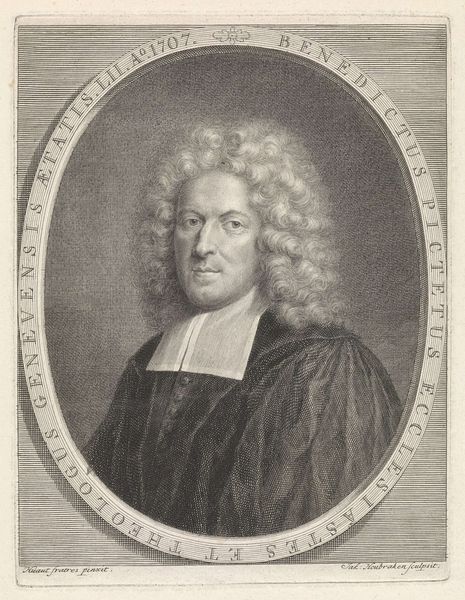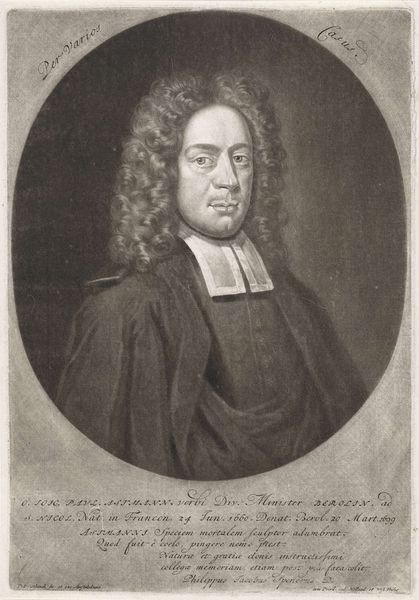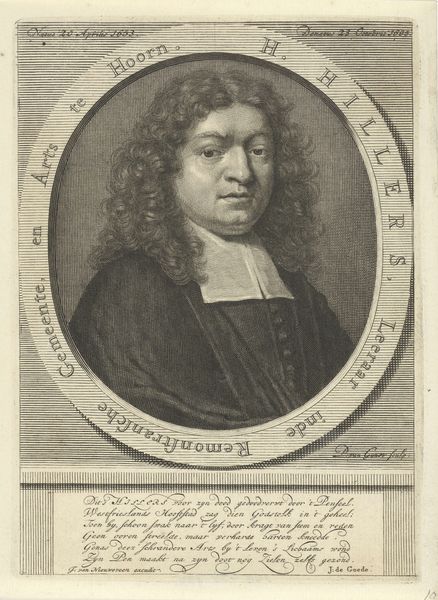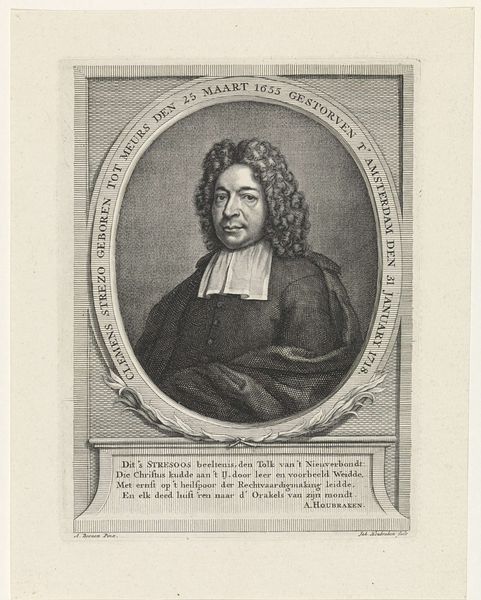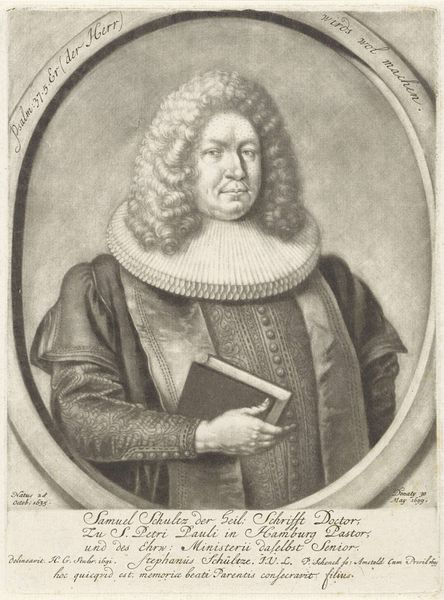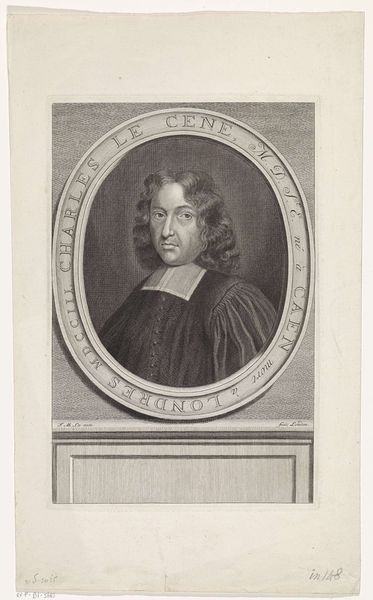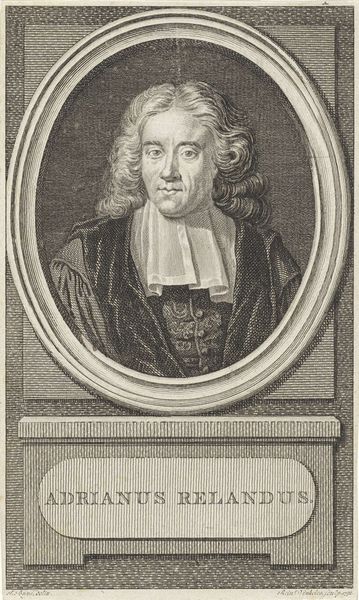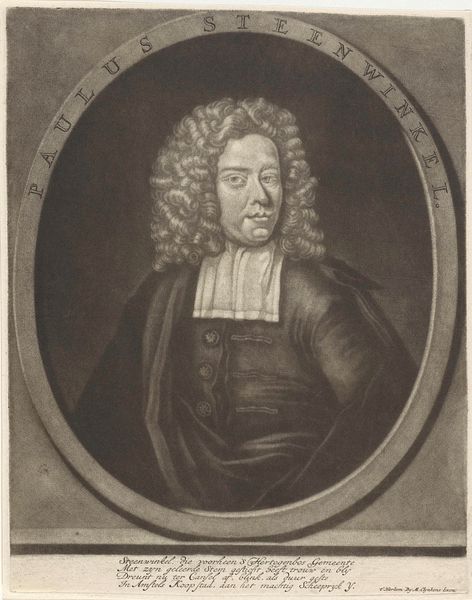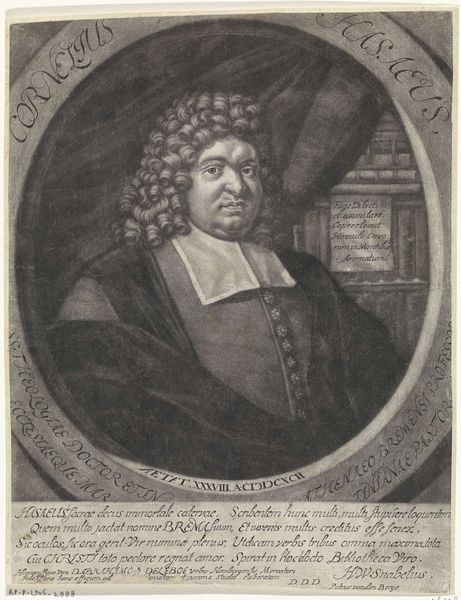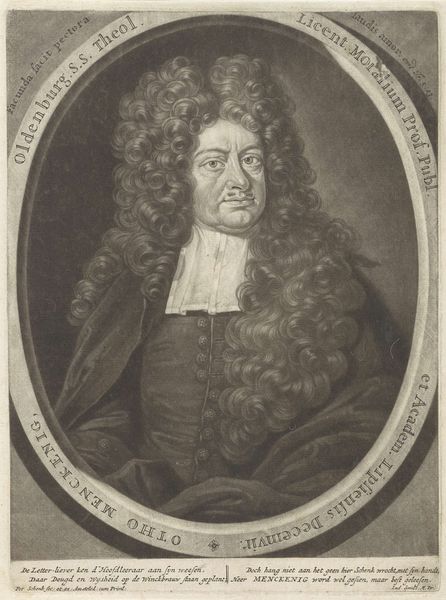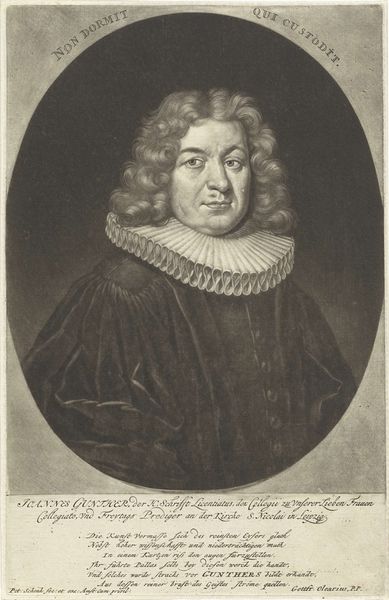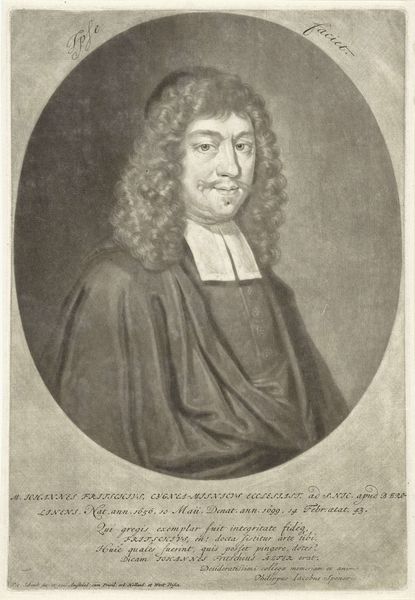
Portret van Ierse Anglicaanse geestelijke George Walker 1681 - 1741
0:00
0:00
paper, engraving
#
portrait
#
baroque
#
paper
#
engraving
Dimensions: height 185 mm, width 136 mm
Copyright: Rijks Museum: Open Domain
Curator: Here we have "Portret van Ierse Anglicaanse geestelijke George Walker," a work dating from 1681 to 1741. It is currently held at the Rijksmuseum. As an engraving on paper, it exemplifies the portrait style prevalent during the Baroque period, brought to life by François van Bleyswijck. Editor: My first impression? Restraint. The meticulous lines of the engraving give the portrait a very composed, almost formal air, which strikes me as fitting for a clergyman. But I also note the power embedded in symbols around him. Curator: It's interesting that you focus on "restraint," given its Baroque origins. This was achieved through skilled labor, as creating such details on paper via engraving necessitates an in-depth understanding of the process. The paper itself, as a ground for reproduction, allowed for broad circulation of his image and ideas. Editor: Yes, and the deliberate choice to depict Walker within a circle evokes classical medallions of emperors or notable figures. Note his flowing wig, common attire of the time signaling status, also carries symbolic weight and suggests not just his individual identity, but his connection to established institutions and ideas of authority and knowledge. Curator: We cannot ignore how the print functions as a mode of communication, distributing the likeness of a man and embedding him into social discourse. The engraving enabled his ideas and influence to extend far beyond the immediate locale of the church he presided over, speaking volumes about the role of image-making and the technology enabling the printing process itself. Editor: Absolutely, and even the text below, though concise, further mythologizes him. The description of Walker in defensive garb, saving the church with the bible and the sword underscores this idea of spiritual and earthly authority intertwining to safeguard a community, which will add emotional heft to how audiences view this man and how cultural memory would persist over time. Curator: Thinking about our engagement here, I see the ways we attend to different facets, yours focused more so on meanings embedded into iconographies while my end is always focused on the labor, social reach of a thing through production—an important perspective as we try to come closer to it. Editor: Indeed. By studying those interwoven layers, we begin to see how portraiture, like this image of Walker, really functions not just as a likeness, but as a condensed historical and cultural object, dense with symbolic freight.
Comments
No comments
Be the first to comment and join the conversation on the ultimate creative platform.

